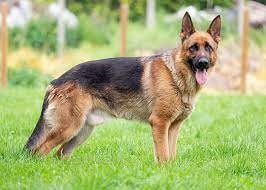By Dr Ibikunle Faramade
Continued from …(1)
Dewclaw removal: Dewclaw removal is a procedure that is carried out to remove the vestigial first digits of the forelimbs and sometimes the hindlimbs. Breeds that are reputed to have double dewclaws include the Bauceron, Norwegian Lundehund and the Great Pyrenes.
The procedure is carried out within the first few days after birth usually without anesthesia or analgesia but it may also be performed later in life. The main reason for performing this procedure is the prevention of injuries associated with accidental tearing of the dewclaws and also because there is no wear of the associated nail.
However, there is no empirical justification to determine the actual incidence of dewclaw tearing so the scope of the problem is not known.There is no documented evidence of the benefit of the surgery to the animal.
Declawing: Declawing or onychectomy is an elective surgical removal of the claws (usually in cats), through amputation of all or parts of the distal phalanx. There are many variations of the procedure (may involve the removal of the entire distal phalanx or removal of all or most of the distal phalanx). Various degrees of complications have been associated with this cosmetic surgery.
The main argument in favor of this procedure is the prevention of scratch related injuries to people and damage to property. It should be noted that scratching is a behavioral attitude of cats, especially, showing aggression. There are convincing evidences that post-operative complications, pain and discomfort associated with this procedure is great. There is also a possibility of the claws to regrow if the surgery is not properly done. Therefore, moderation of cat behavior through training is a veritable alternative to the performance of the surgery.
Scratching is also a natural cat behavior to delineate territory. Removal of the claw will prohibit this natural instinct. It should be borne in mind that biting and scratching are also cats’ personal defense mechanism. If the claws are removed, the cat could still bite! Trimming the nails regularly and the use of artificial nail caps may provide the required alternative to this surgery, except it is indicated for therapeutic purposes.
Devocalization: This involves complete or partial removal of the vocal folds to prevent vocalization (barking) or reduce the intensity of vocalizations. It is referred to as ventriculocordectomy in medical parlance. It is usually done to prevent excessive barking which is regarded as undesirable by some owners or by people living in neighborhoods with strict regulations of pet ownership. Causes of undesirable barking include general anxiety, separation anxiety, and compulsive disorders.
It is more welfare compliant to use other behavioral modification approaches than to consider the procedure in the first instance. It has been established that positive reinforcement training was effective at reducing barking in response to somebody knocking at the door. Dogs that are exercised more frequently are also found to bark less than those that are not exercised.
In conclusion, as far as devocalization is concerned, it does not address the underlying behavioral problem, which may be affecting the quality of life of the dog negatively, it only removes the manifestation of the problem (i.e. the dog is unable to bark) Complications of devocalization procedure include formation of laryngeal web that obstructs airflow.
Defanging: This is the removal or reduction of the canine teeth and can be performed in either puppies or adult dogs. This procedure was originally developed to decrease the danger that captive wild animals pose to humans and similar reasons were advanced for the procedure to be carried out in companion animals.
Castration and Ovariohysterectomy: Castration is the removal of the testes of male animals while ovariohysterectomy (OVH) is the removal of the uterus and ovaries of female animals. Castration is believed to reduce overt sexual behavior in male dogs and cats and to make them less aggressive. It is also said to reduce the chances of the occurrence of prostate cancer. OVH is also believed to reduce the chances of occurrence of mammary gland tumours in female dogs and cats.
However, research has proven that there is a weak link between the occurrences of prostate or mammary gland tumours in intact animals when compared with castrated or ovariohysterectomized (neutered) animals. The only acceptable justifications for these procedures is the prevention of unwanted explosion of dog population, especially, among street/stray dogs or as a form of surgical therapy.
In all, these procedures are absolutely unnecessary when trying to achieve aesthetic or cosmetic purposes as highlighted above. Behavioral therapies, reinforcement of obedience training, grooming, etc. could produce the desired results instead of subjecting animals to inappropriate painful procedures in the name of cosmetics or aesthetics with no proven benefits to animals.

Dr. Ibikunle Faramade is a veterinary pathologist and a lecturer at the Federal College of Animal Health & Production Technology, Apata. Ibadan. He’s the C.E.O of the Society for Animal Rights Protection, a non-profit and a non-governmental organization dedicated to the promotion of animal welfare, animal rights and prevention of cruelty to animals.
animalrightsprotection2020@gmail.com , +2348028305284




